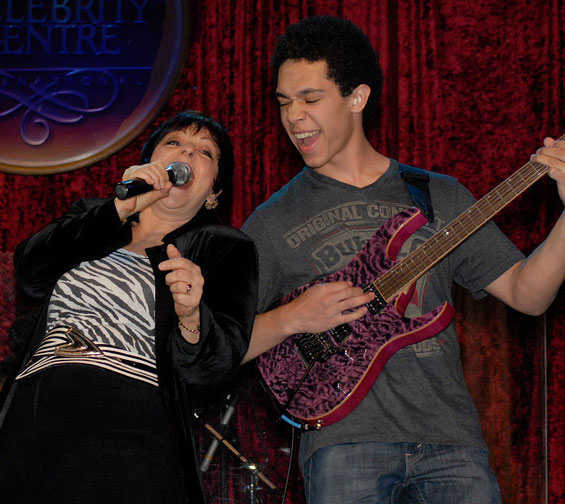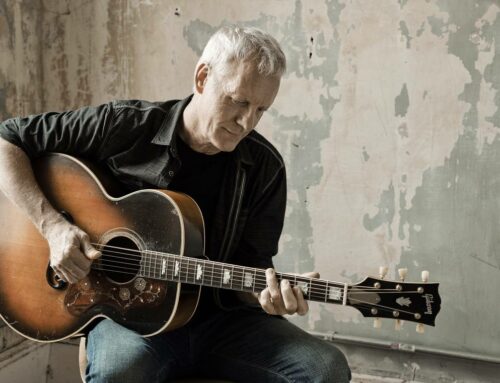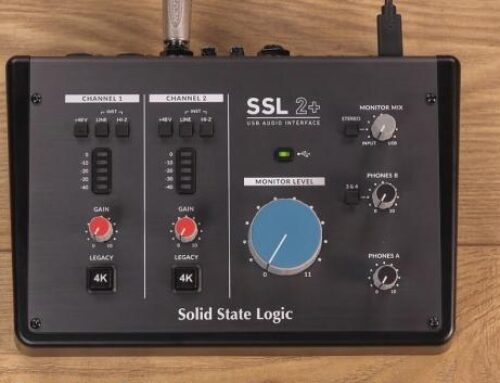by Jeannie Deva
We can probably all agreethat a powerful performance is one that engages and emotionally moves the audience. There are many details that go into this achievement: from sufficient vocal technique so you can easily express and “sell” your song to performance technique; from being able to handle yourself confidently on stage to excellent mic technique; from working comfortably with the sound system and monitors to the art of how to connect with your audience, it is possible to address and develop each aspect to complete confidence.
Here are a few of the details that go into a powerful performance.
Technique versus Performance
I’m sure you’ve heard vocalists who don’t have technically developed voices, yet they really command your interest and can inspire you.
While not having the technical proficiency of a Bobby McFerrin, Pink or Rachelle Farrell, performers like Tom Petty, Mick Jagger and Bono still inspire huge audiences. Technique can give you a bigger vocabulary of sound, develop your self-confidence, and avoid vocal blow-out. But what makes one singer great and another, a bore, is the degree of life and communication projected through the song, and the resulting emotional impact on the audience.
Certainly, the emotion of a song will be barriered by a voice that goes off pitch, strains or sounds weak or bland. I’ve constructed a vocal method to help singers develop the natural workings of their voice resulting in not only in improved tone, a wide range, stamina and power but more importantly, a voice that is at your command to say what you want to say how you want to say it and not hurt yourself in the process.
Nevertheless, focus on the technical details of singing during your practice time until they become part of your approach. When you’re performing, the techniques will be there to support you while you immerse yourself in the music, your message and your audience.
More Vowel – Less Strain
A straining voice is physically uncomfortable and painful for the audience to hear. The sound of your voice is the result of sung vowels. This means that every time your vocal folds vibrate, they are creating the sound of a vowel at a certain pitch both of which are determined by you and your imagination. More basically, the melody that you sing is your vowels.
Stressing consonants closes your mouth and its internal muscles (such as the front or back of your tongue) and causes your breath to exhale quickly and forcibly. Vowels, on the other hand, require a more open mouth and utilize your breath more efficiently since the breath has to act as your vocal vibrator. It’s vital to work closely with the vowels of your words.
Choose a song and sing it through. Notice any words that coincide with points of strain. Work those phrases over, while directing your attention to the vowels of these words. As you stop pushing on the consonants and focus on the vowel, you should find yourself gaining greater vocal comfort while improving sound quality. Continue working through the song in this manner. I have a number of specific exercises to help you with this, found in my “Contemporary Vocalist” book and CD series.
Making the Song Your Own
It’s got to be your song when you sing it. Getting across the emotion of the song is what gives the song its punch. I once heard someone sing a simple, quiet song like it was a big tear-jerker. She used little “catches” in her voice to show just how much “feeling” she had. It was inappropriate for the song and created an undesirable effect on those listening. The most effective and powerful vocals are ones that are emotionally believable to your audience. Your voice is sensitive to your emotions and thoughts. The meaning you give a song will automatically influence the integrity of your sound and your impact on the audience.
Take the lyrics of a song. Look over the words to each verse. What’s the story of the song? By singing it, what do you want to say? It’s not always some deep significant message, but if you don’t understand what you’re saying and how you want to interpret it, your audience won’t either. Speaking, then singing the words aloud as though TO someone, can help you find your own interpretation.
Dynamics or Din
Contouring your song through phrasing and dynamic changes while sounding natural is essential in holding the interest of your audience. Once you’ve developed your own interpretation of the song, use the following guidelines.
To achieve an emotional build-up, you don’t always have to increase your volume. Often, an ascending pitch or melodic phrase builds emotion. You can draw back your volume at these times and create even more intensity.
Use pauses to breathe or to place greater emphasis on a key word. Ensure that your pauses stem from an understanding of what you’re saying and are natural rather than mechanical or choppy. Incorrect phrasing can obscure the meaning of your lyrics.
Giving your words equal stress is monotonous and robotic. Likewise, phrasing that is unnatural to how you would really say what you’re saying in the song will not communicate. In every sentence there are key words that carry the meaning. The others are connective or supportive which, if stressed, obscure the overall meaning. For example, if you spoke this sentence stressing the word “the,” it wouldn’t make sense. Place your emphasis on the words that will create the greatest expression and meaning.
Emphasize a word by: increasing its volume, holding it longer than the other words in the phrase, adding texture to the vowel such as a growl or rasp, or using vocal embellishments on one or more syllables of a word. For examples of these techniques, listen to Robert Plant (Led Zeplin), Chaka Khan, Patti LaBelle, Steven Tyler (Aerosmith), Patty Griffin, Kings of Leon, Christina Aguilera or Luther Vandross.
When applying these principles, keep in mind the saying: “Less is more.” Vocal acrobatics are technically impressive but will only communicate when done tastefully, in context; and spring from your emotions rather than merely an effort to impress.
Be Yourself
Deciding what effect you want to create on your audience is the final and most important aspect of performance preparation. This enables you to make each song your own. It may be easier to sing a song glibly or pretend to be someone else, but that robs you of your own personality and you know what, the audience will pick up on it. Only by being yourself and deciding that you are singing those lyrics to each individual in your audience, will you be able to have the impact of a great performance.
You may be thinking this all seems just a bit too calculated and wouldn’t it be better to just go with the flow. Well, it is calculated. If you pre-decide where you’re going with the song, what your interpretation of it is, etc. you use that as your form. Then, within that, you can add spontaneity.
This is done to make sure that you are really in the “driver’s seat” navigating the song and its nuances. This way, both you and the audience have a mutually great experience. If you go with the flow, you are abdicating control and who knows how that will end up. All successful artists – especially those that last – control their performances and their careers.




